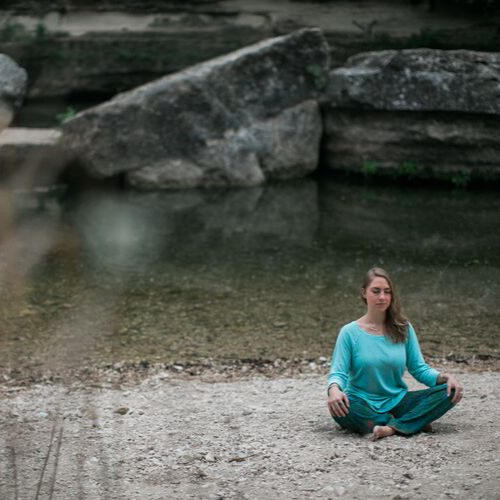
Pema Chodron writes in the Introduction of her book, “How to Meditate,” how a meditation practice nurtures five qualities that come forth as we consistently sit and practice.
1) “cultivating and nurturing steadfastness with ourselves”
2) “clear seeing”
3) “the cultivation of courage”
4) “We develop attention to this very moment; we learn to just be here”
5) “no big deal”
Quality #1 – Nurturing Steadfastness with Ourselves
Generally, when we cultivate steadfastness, we are intentionally allowing whatever is arising in our lives to do so without adding the extra layers of liking, disliking, etc. Pema calls it a kind of loyalty to ourselves. Practically speaking, when we sit down to meditate this means allowing thoughts, sensations, emotions, etc. to arise without feeling the need to reject or push away those experiences. If your mind is all over the place, you start by noting that your mind is all over the place. With this information in hand, you can tweak your practice accordingly – ie. taking yourself through a slow and juicy body scan. If at the end of the body scan your mind has quieted down a bit – great. If at the end of the body scan your mind hasn’t quieted down at all – great. You’ve allowed your experience to arise. It’s truly that simple. Though perhaps not easy.
You may have heard the expression, “what you resist persists.” This steadfastness and willingness to sit with each breath as it comes and goes on our cushion, is strengthening and nurturing our ability to resist the resistance. This loyalty to ourselves and our experience creates an access point for living a more richly textured life both on and off the cushion.
20-Minute Meditation Exercise
Preliminaries
Be sure to engage a little movement before you sit down.
Take a few moments to connect with your breath in your body and note how you’re feeling both physically and emotionally; what is the quality of the state of your mind? You might jot a few words down in your meditation journal.
Remember why you meditate.
Set your timer for 15 minutes.
Practice
Take yourself through a body scan using your five senses – spend time lingering with each one; notice when you think you “should” be moving on to the next.
Sight – What is in your field of vision (eyes open with soft gaze or closed)? Can you notice light dancing or the depth of the vision field, etc.
Smell – Are there nuances in the smells in your space? Are there things you judge pleasant or otherwise, etc?
Taste – and Texture! Any leftover tastes in your mouth? Coffee? Tea? Toothpaste, etc. Also, where in your mouth can you feel moisture, dryness, etc.
Sound – Bring your attention to close and far sounds, pleasant and unpleasant, etc.
Touch – Notice the surrounding air on your skin, skin on skin, clothes on skin; sitz bones on surface, etc.
Pema writes, “Meditation gives us the opportunity to have an open, compassionate attentiveness to whatever is going on. The meditative space is like the big sky – spacious, vast enough to accommodate anything that arises.”
By using the five senses as our touchstone, we are directing attention to each breath and sense and unadulterated experience. The next stage for this exercise is to sit abiding with your breath – allowing sensations, thoughts, sounds, and more to arise in your field of awareness while remaining steadfast in your attention to your breath.
Not sure how? Join Community Meditation sessions to help amplify your practice in community and while practicing on your own.

Leave A Comment